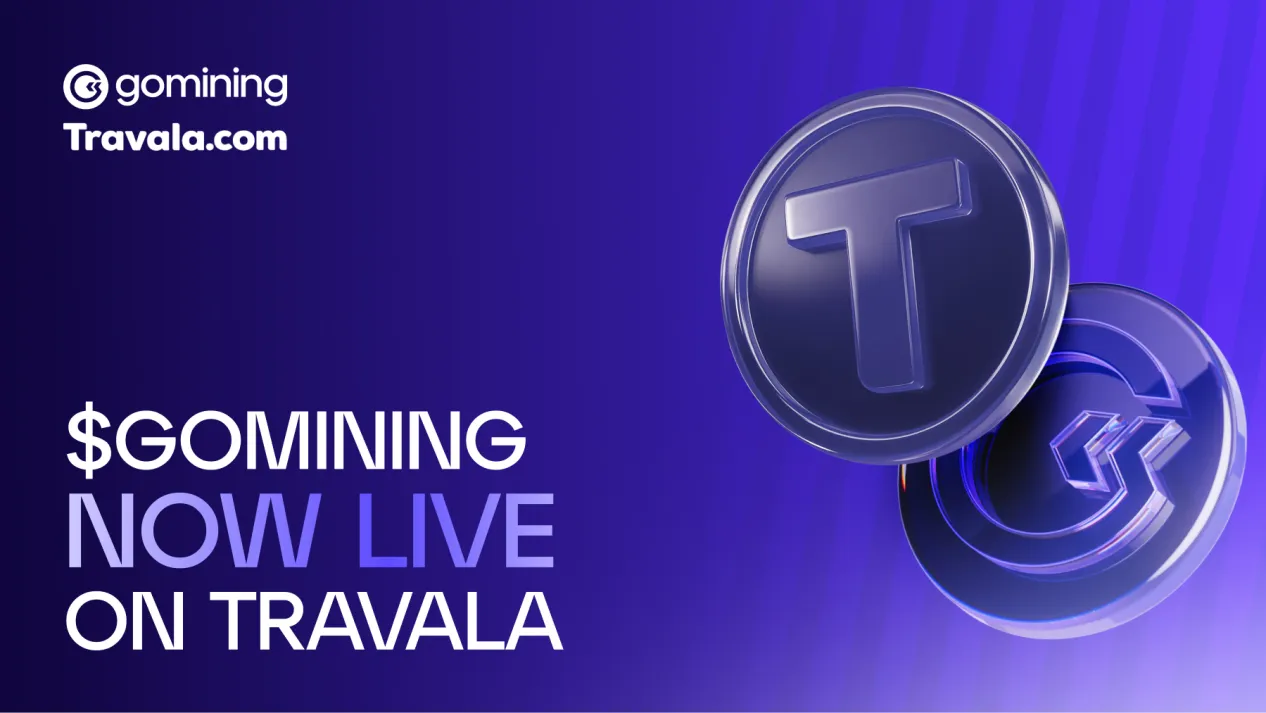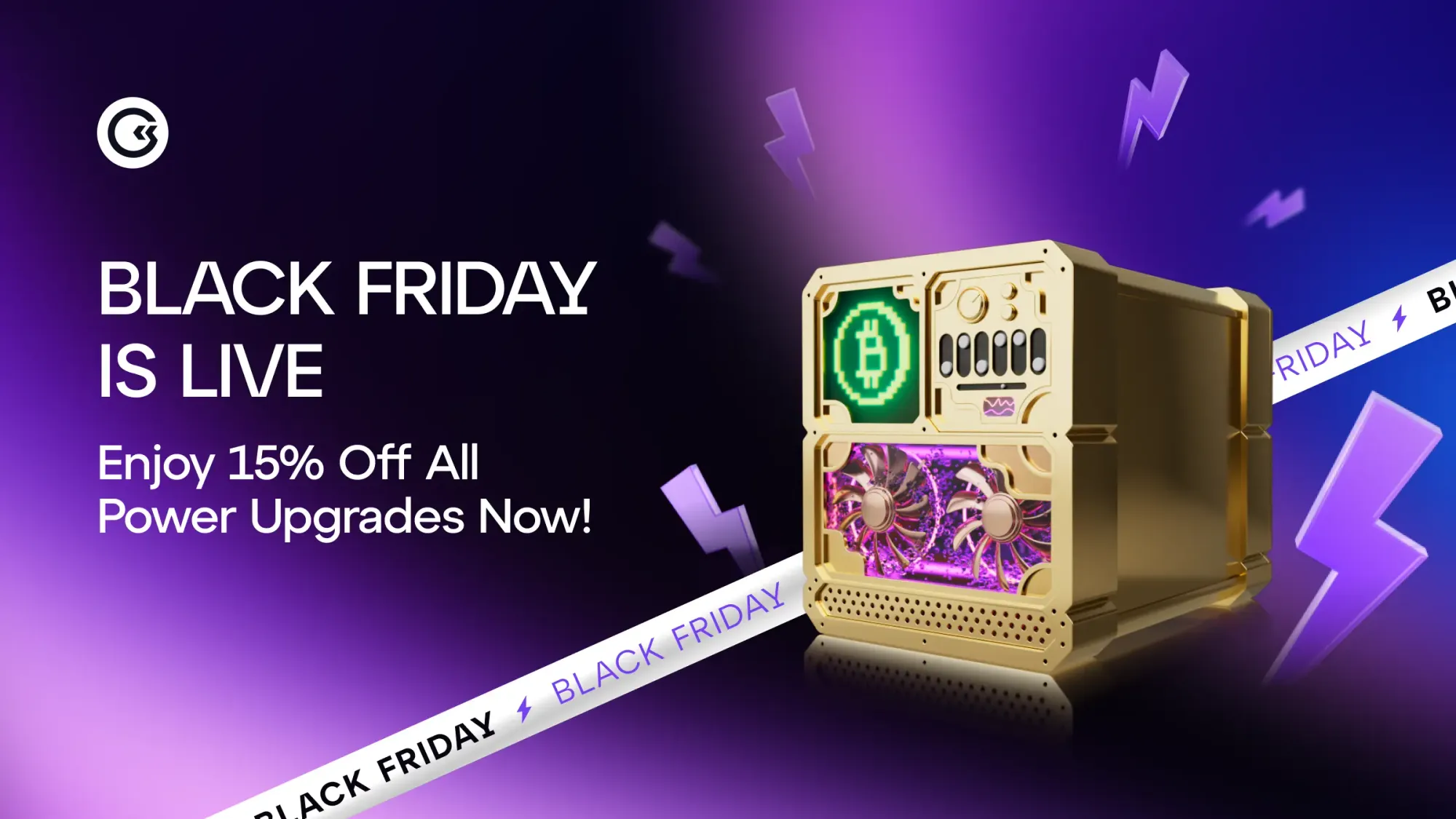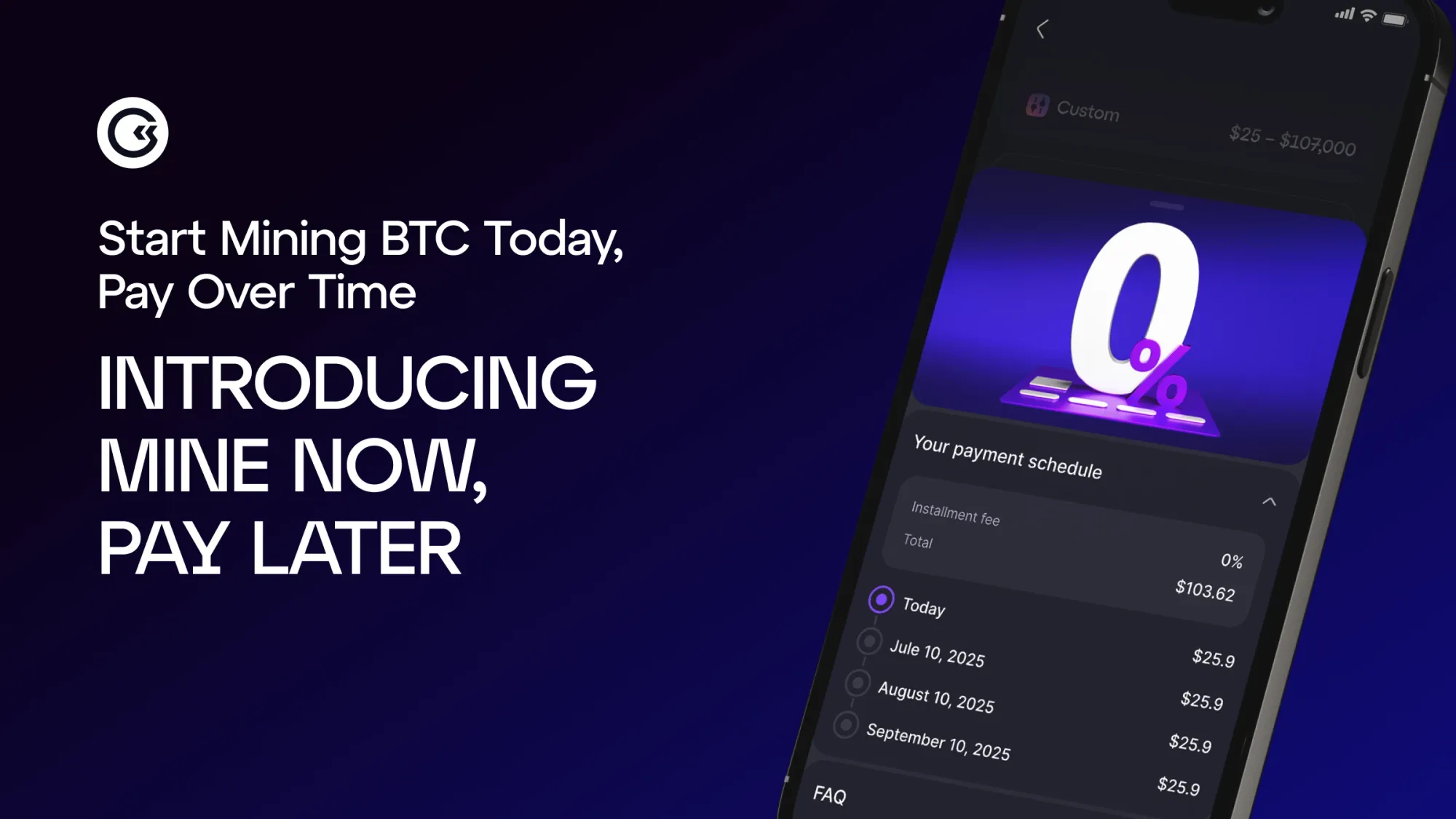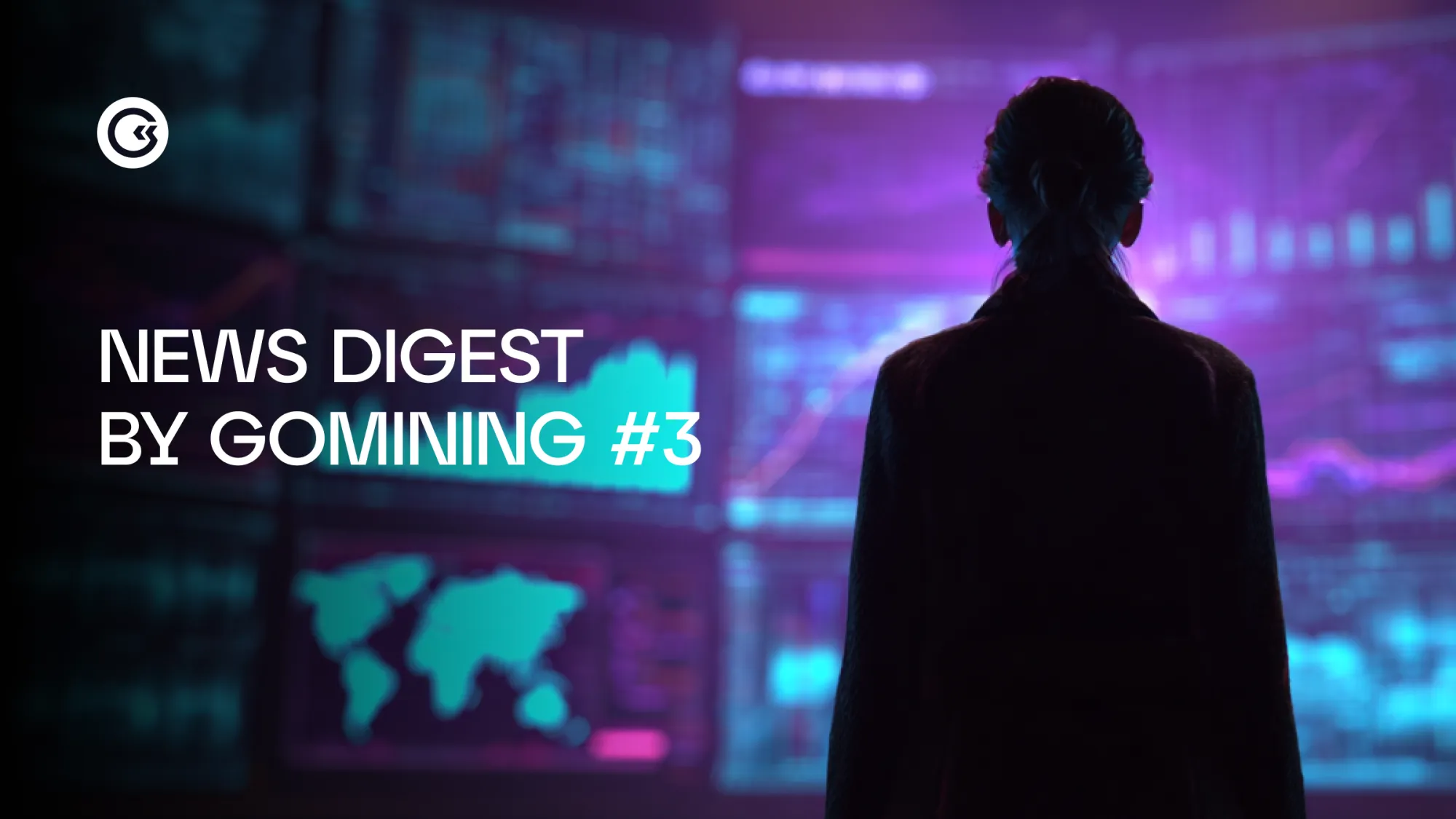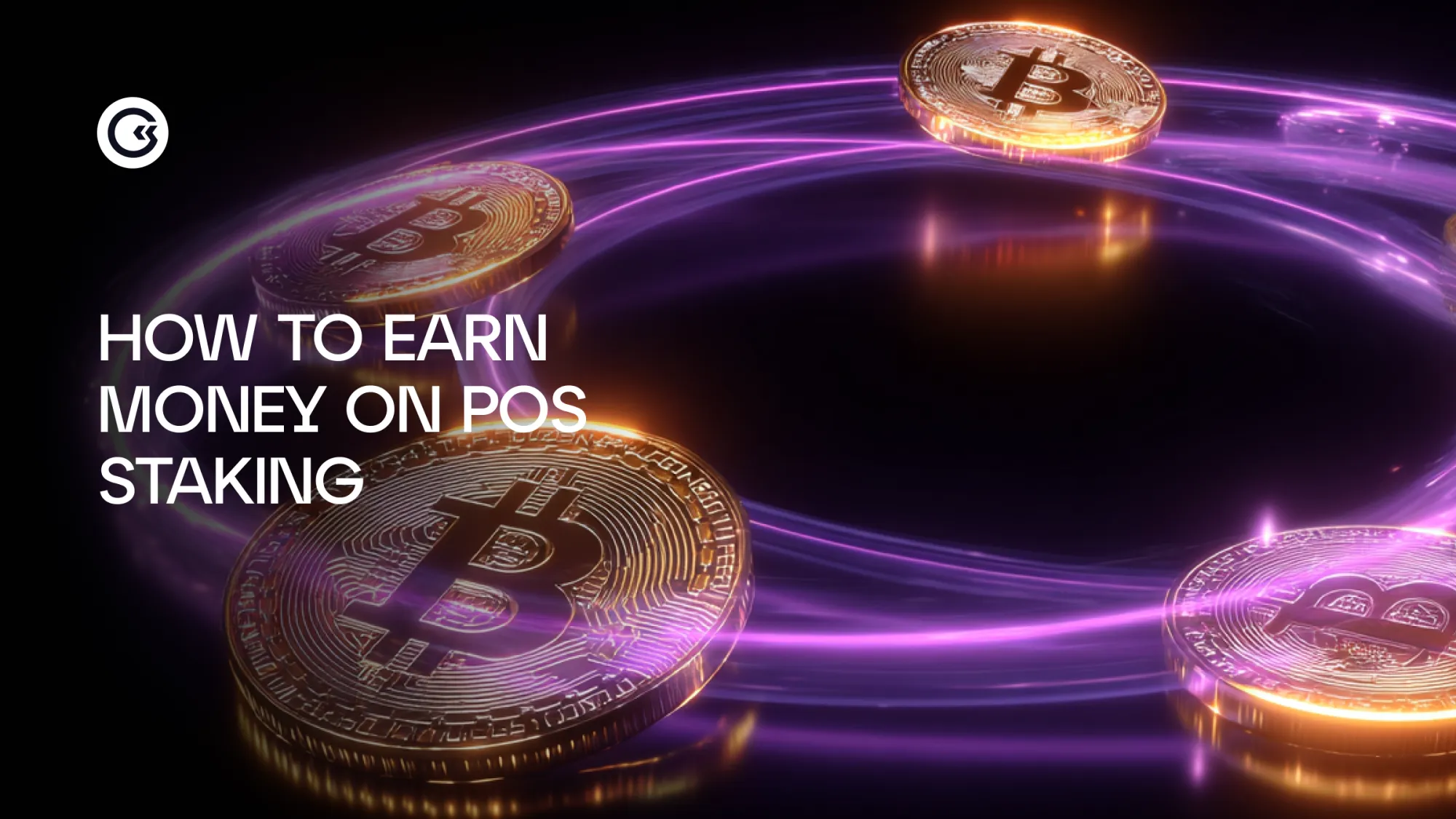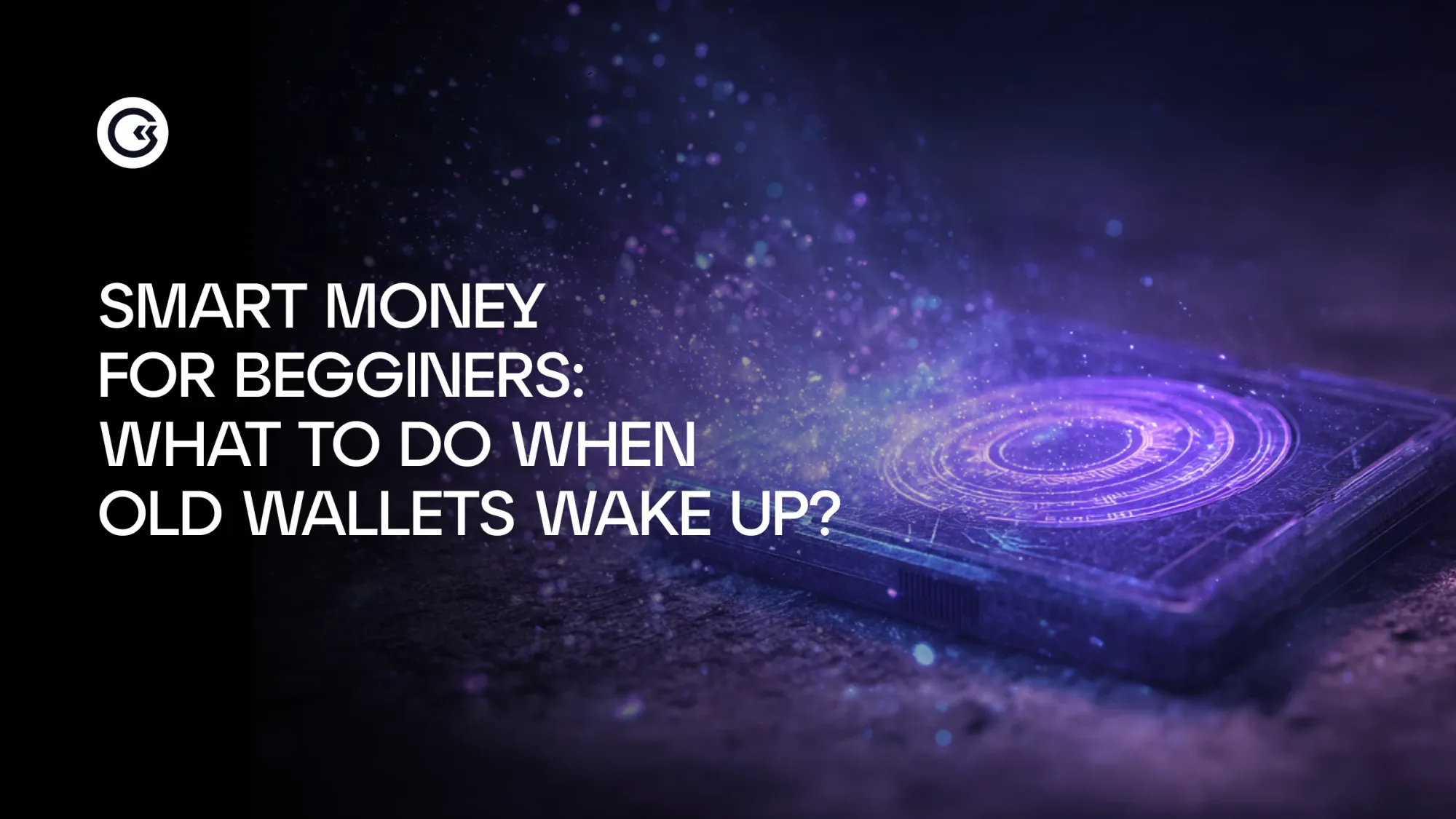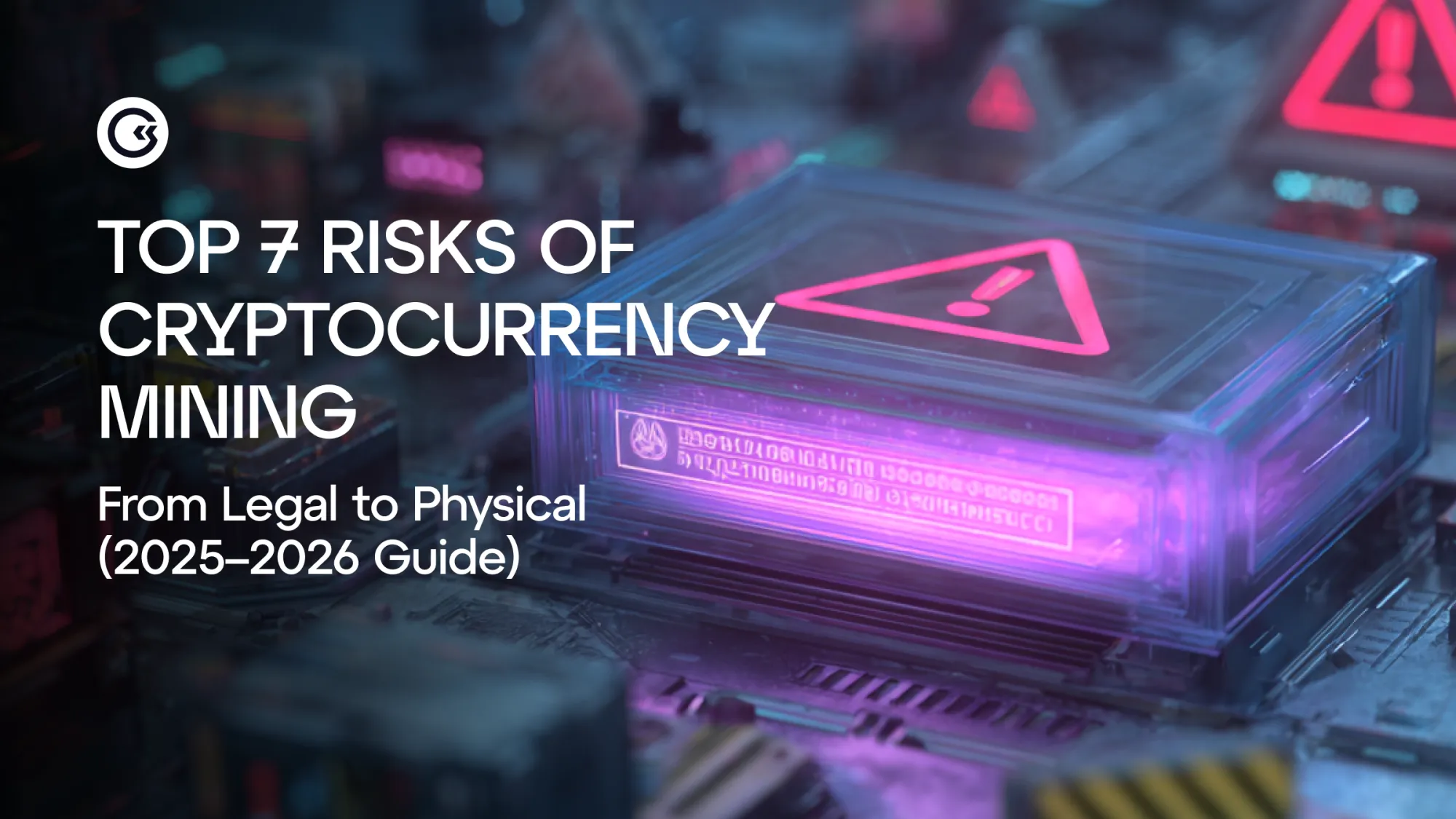The purpose of this article is to provide practical guidance on finding truly undervalued crypto projects by December 2025: what to understand by "undervalued," what metrics to look at, and how to build a portfolio with risk in mind. We begin by providing clear definitions and methodology, a checklist with recommendations for your portfolio, and then a list of 10 selected projects. The data cutoff date is December 2025.
What does "undervalued project" mean?
"Undervalued" does not simply mean "cheap." It is a project whose market price lags significantly behind objective fundamentals and future catalysts.Signs of undervaluation:
- real utility of the token in the ecosystem;
- active users and growing holder engagement;
- protocol revenue or clear paths to monetization;
- healthy tokenomics (controlled issuance, adequate unlock schedule);
- presence of immediate catalysts (upgrades, listings, integrations).
Checklist
- Utility: what is the real function of the token and who uses it.
- Tokenomics: issuance, inflation, unlock schedule, team share, and reserves.
- TVL (for DeFi) or equivalent usage for other categories.
- Protocol revenue / Fee revenue / Staking rewards.
- MCAP and FDV; MCAP/TVL, MCAP/Revenue, MCAP/Active user ratios.
- Share of top 10/top 20 holders and large transfers to exchanges.
- Daily active wallets / growth in transaction activity.
- Developer activity.
- Planned catalysts: upgrades, listings, airdrops, L2 launch.
- Smart contract audit and transparency of owner rights.
The undervalued Cryptos of November
NEAR — L1
- Why it is undervalued: strong dApp ecosystem, very low fees, and a well-thought-out model for developers; price lags due to lack of market attention.
- Key fundamental metrics: number of dApps; influx of new wallets; fund activity and availability of grants.
- On-chain metrics to watch: active addresses; TVL in bridges and DeFi; average fees; transaction volume.
- Catalysts (coming months): major bridges and integrations; scaling upgrades.
- Tokenomics and utility: governance; gas fees; validator incentives; verify issuance and unlock schedule.
- Risk: medium.

Source: dappradar.com
Arbitrum — L2
- Why it is undervalued: leader in activity among L2s, but competitive pressure and falling ether prices are holding back its valuation.
- Key fundamental metrics: TVL on L2; number of active dApps; transactions relative to L1.
- On-chain metrics to watch: TVL; fee revenue on relays and staking; growth in active addresses.
- Catalysts: launch of optimizations; integration of large projects; activity around OP-stack as a factor of attention.
- Tokenomics and utility: network service fees; ecosystem incentive mechanics; token distribution and vesting.
- Risk: medium.

Source: defillama.com
Optimism — L2
- Why it is undervalued: mature ecosystem and strong partnerships; the price may underestimate the long-term profitability of the protocol.
- Key fundamental metrics: rollup activity; number of bridge operations; ecosystem subsidy volumes (grants).
- On-chain metrics to watch: transaction growth; inflow of funds into OP pools; fee revenue.
- Catalysts: expected upgrades; development of ecosystem support programs.
- Tokenomics and utility: governance; retainer incentives; study unlock and fund distribution.
- Risk: medium.
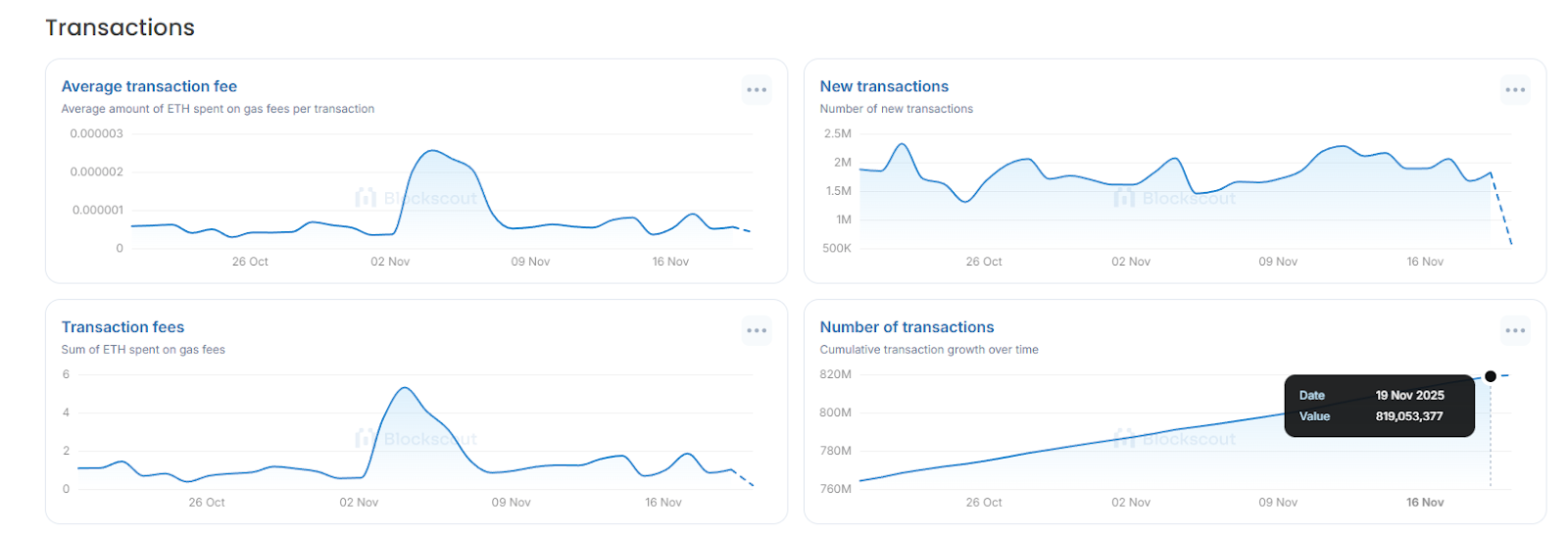
Source: explorer.optimism.io
Aave — DeFi / lending
- Why it is undervalued: large, proven lending protocol; price may not reflect sustainable revenues and benefits of updates (v3+).
- Key fundamental metrics: TVL; protocol revenue; volume of locked assets.
- On-chain metrics to check: protocol revenue; utilization rate; stablecoin inflows.
- Catalysts: launch of new markets with institutional investors; integrations with RWA; market parameter updates.
- Tokenomics and utility: governance token; liquidity provider incentives.
- Risk: medium-low.

Source: defillama.com
Curve — DeFi / stable swaps
- Why it is undervalued: Specializes in stable pairs, consistently generates revenue from fees; long-term monetization may be undervalued.
- Key fundamental metrics: TVL in stable pools; fee revenue; number of integrations.
- On-chain metrics to check: fees; trading volume; pool depth.
- Catalysts: governance upgrades; new pools with large integrations.
- Tokenomics and utility: voting; LP incentives; check ve-model distribution and unlocking schedules.
- Risk: medium.

Source: defillama.com
"Analysis of Curve's fee dynamics and model shows that the protocol remains central to stablecoin trading and is capable of sustaining stable revenues as demand in DeFi recovers," according to the Gate exchange blog.
Celestia — modular network
- Why it is undervalued: unique modular architecture for data storage and transmission; its role in the stack has not yet been fully appreciated by the market.
- Key fundamental metrics: number of validators and pilot projects; L2 integrations; data volume through the network.
- On-chain metrics to watch: data space utilization; developer activity; transaction sheets.
- Catalysts: L2 integrations; launch of additional network services; data storage partners.
- Tokenomics and utility: data storage fees; staking; emission and distribution should be verified.
- Risk: high.
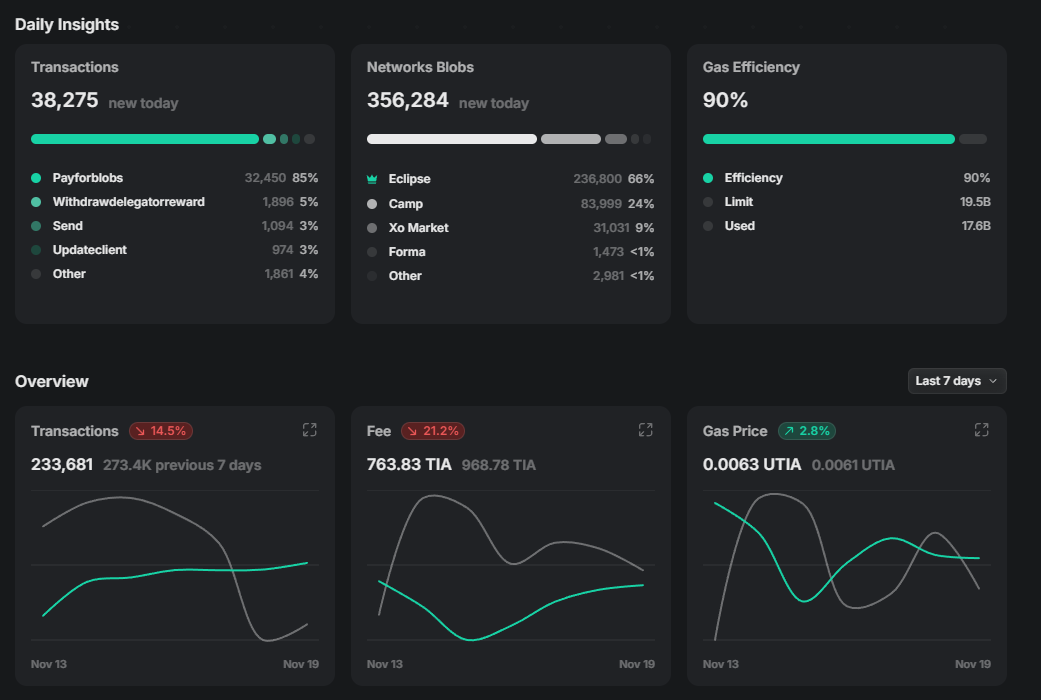
Source: celenium.io
EigenLayer — re-staking and trust service
- Why it is undervalued: re-staking opens up new sources of security for modular protocols; future monetization of services may be undervalued.
- Key fundamental metrics: re-stake volume; number of connected services; share of ETH in staking.
- On-chain metrics to watch: locked ETH; revenue streams for service providers; activity of new modules.
- Catalysts: support for large projects; regulatory clarity; service integrations.
- Tokenomics and utility: service fees; security; minimal risks for stakers.
- Risk: high.
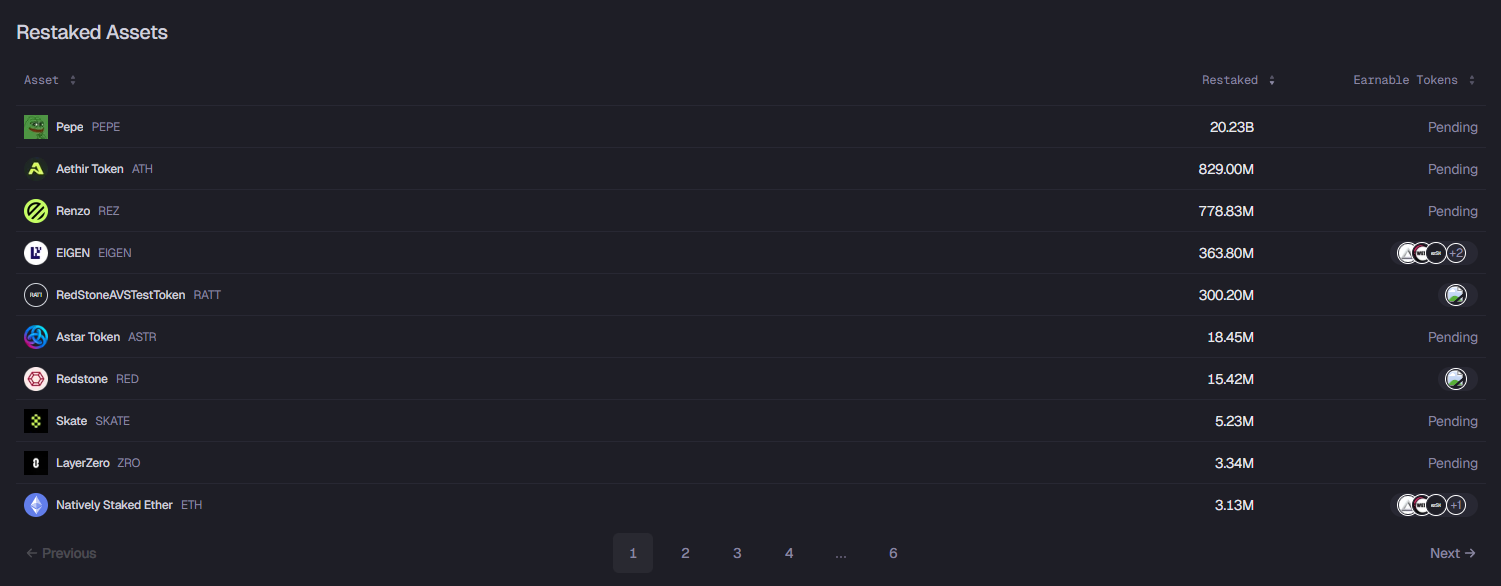
Source: eigenlayer.xyz
Injective — DEX and cross-chain blockchain markets
- Why it is undervalued: high-speed DEX with a focus on derivatives and cross-chain; low attention to the niche may underestimate the price.
- Key fundamental metrics: trading volume; margin and derivatives market activity; liquidity.
- On-chain metrics to check: trading volumes; order depth; number of unique traders.
- Catalysts: derivatives listings; CEX integrations; speed and margin trading upgrades.
- Tokenomics and utility: fees; LP incentives; evaluate unlock and market reserve share to secure transactions.
- Risk: medium.
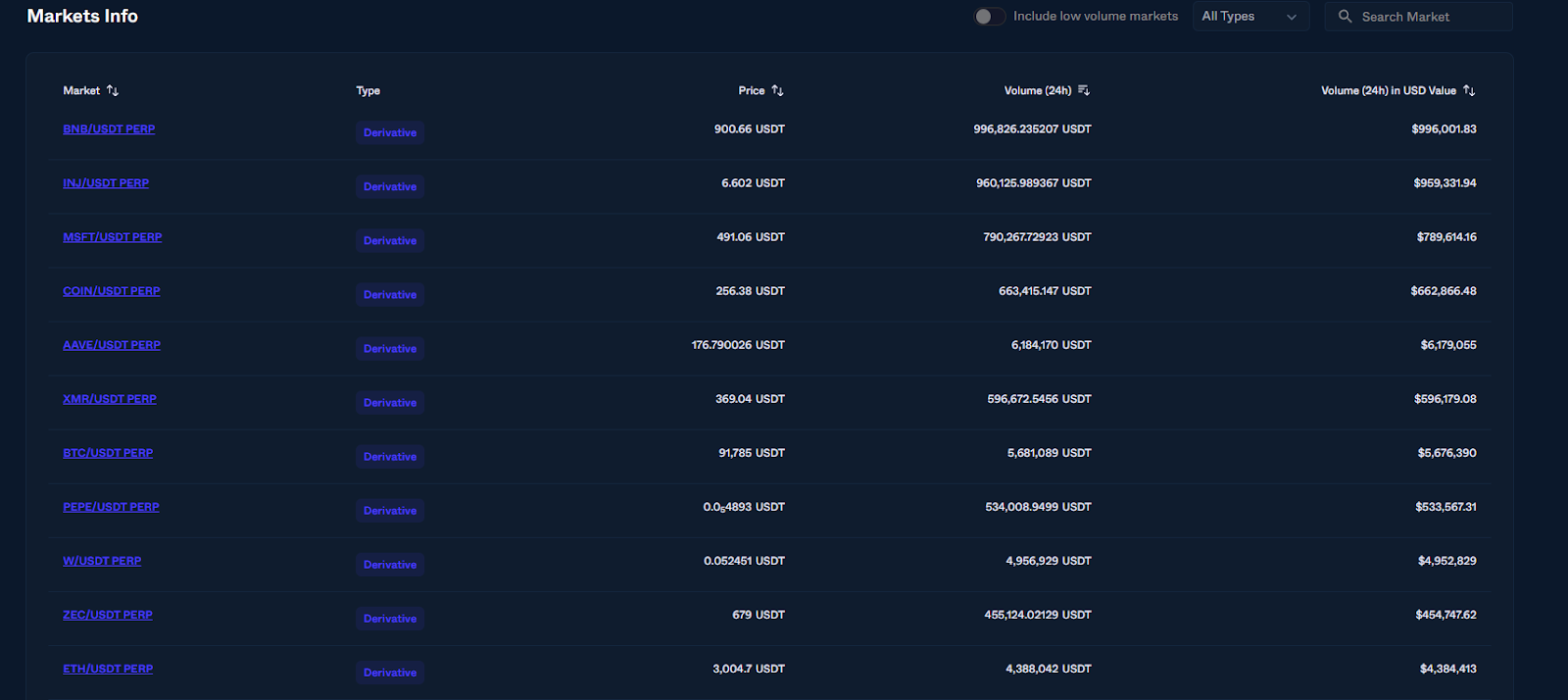
Source: injscan.com
"INJ shows strong growth potential thanks to its focus on derivatives markets and cross-chain infrastructure; it is a project that benefits from the resurgence of interest in margin trading" — Coincodex, Injective price forecast
Immutable — gaming and NFT infrastructure
- Why it is undervalued: The Web3 gaming niche is growing; the platform's role in infrastructure may be underestimated by the market.
- Key fundamental metrics: number of games and projects; NFT transactions; gaming economic models.
- On-chain metrics to watch: gaming contract activity; user growth; NFT trading volumes.
- Catalysts: launch of major titles; partnerships with publishers; SDK upgrades.
- Tokenomics and utility: in-game payments; developer incentives; check team share and vesting.
- Risk: high.

Source: explorer.immutable.com
"Immutable X continues to attract developers and game studios thanks to zero fees and an eco-friendly model; with the emergence of major game titles, this gives the project serious growth potential" — Analytics Insight Immutable X price forecast
Centrifuge — RWA and asset tokenization
- Why it is undervalued: a niche player with real asset tokenization cases; growth of real RWA assets.
- Key fundamental metrics: volume of tokenized assets; RWA pool yields; number of institutional partners.
- On-chain metrics to check: TVL in RWA pool; inflow of USD payments; fee revenue from services.
- Catalysts: agreements with institutional investors; new RWA listing platforms; regulatory clarity.
- Tokenomics and utility: access to RWA strategies; governance; explore revenue structure and risk models.
- Risk: high.

Source: centrifuge.io
Quick look at selected coins
Risk indicators
Large upcoming token unlocks, high concentration in a limited number of wallets, lack of or questionable security verification of smart contracts, sharp increase in trading volumes without a parallel increase in the number of users or TVL, mass transfers to centralized exchanges, non-transparent token issuance and reserves, a noticeable decrease in developer activity in repositories, partnerships without technical implementation or commercial results, as well as excessively low liquidity with high market capitalization — all these signs require careful verification and are usually a signal to refuse to buy or to significantly reduce your position.
If stable income is important to you and you prefer to earn passive income instead of actively trading altcoins, GoMining offers solutions for renting computing power and managing returns; our calculator will quickly compare the expected mining profits and help you choose the optimal strategy.
FAQ
- Why are these coins on the list? The selection is based on a combination of fundamentals (utility, tokenomics, protocol revenue), on-chain signals (TVL, active addresses, stablecoin inflows), and near-term catalysts. Each project on the list has a gap between its market price and objective usage metrics.
- How can I quickly check the data before buying? First, look at TVL and trading volume, protocol revenue, holder distribution, inflows/outflows to exchanges, and developer activity. The projects listed were evaluated in December 2025.
- What are some typical red flags? Large unlock schedules in the coming months, high concentration among top addresses, lack of audit or central control over the contract, sharp inflow of liquidity without user growth.
- How should the portfolio be distributed between low, medium, and high risk? Low risk — 30–40% (projects with high TVL and stable income); medium — 30–40% (successful L2 and scalable protocols); High risk — 20–30% (innovative but risky RWA, gaming, restaking). Rebalance quarterly and set stop losses when levels on the chart or profits are reached.
- How long should you wait for a catalyst? Catalysts work differently: listings or upgrades — reaction in 1–3 months; organic user growth — 6–18 months. Investing based on fundamentals requires patience and risk control.
- How to build an exit strategy for an undervalued position? The exit plan is formed in advance: distribute target profit levels (for example, partial fixation at +30%, +80%, main position at +200%), set a stop loss as a percentage of the initial bet and trading stop rules to protect profits. For long-term bets, determine the condition for transferring part of the position to staking or stable assets when a certain MCAP/TVL ratio is reached.
Should competitors be taken into account when choosing a coin? Yes, especially in the L2 and DeFi sectors. If a project is growing, but competitors are launching similar solutions with stronger support, this reduces its potential. Compare the speed of development, number of integrations, and developer activity among competitors to understand the token's real position.
When is it better to enter an undervalued project — immediately upon detecting an imbalance or wait for confirming signals? It makes sense to enter in stages: the first batch when stable fundamental signs are detected (low MCAP/TVL or stable protocol income) and there are no "red flags," the second — after technical confirmation of the catalyst (upgrade, TVL growth, or user influx). Use time averaging and fix the size of the first purchase at a level that does not violate your risk management.
Subscribe and get access to the GoMining course on crypto and Bitcoin, which is still free.
Telegram | Discord | Twitter (X) | Medium | Instagram
NFA, DYOR.
The cryptocurrency market operates 24/7/365 without interruptions. Before investing, always do your own research and evaluate risks. Nothing from the aforementioned in this article constitutes financial advice or investment recommendation. Content provided "as is", all claims are verified with third-parties and relevant in-house and external experts. Use of this content for AI training purposes is strictly prohibited.
Complete guide "Top 10 Undervalued Cryptocurrencies — December 2025 | GoMining Blog" — why it is important, what metrics to check, how to build a portfolio with risk in mind, what catalysts to track, and how to apply the checklist in practice.
November 24, 2025







